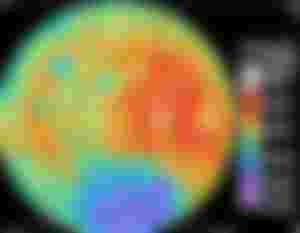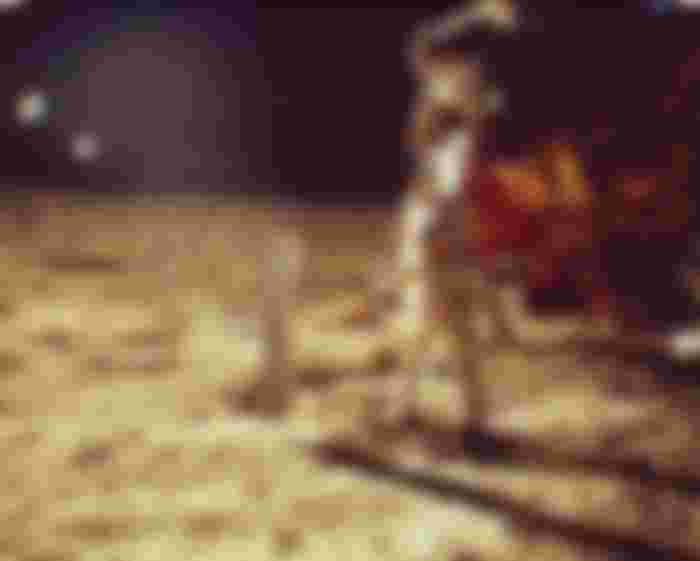The moon is a planet of our earth. Some 240,000 miles from Earth. Its diameter is 2163 miles. Galileo made the first inquiries about the moon in 1609. He said that the moon is a sphere like our earth. He also expressed the view that the moon has the mouths of mountains and volcanoes. There is no air or water in it. Due to the absence of which there are no signs of life on the moon. This has been proven by manned aircraft. It is very hot during the day and cold at night. This difference occurs within an hour.

The day of the moon is equal to our fifteen days. It completes one revolution around the earth in 29 or 30 days. The orbit of the moon is increasing around the earth ie the average distance is increasing from the earth. The lunar and Islamic months are formed by its rising and setting. The moon not only gives us a little light at night, but its gravity also creates tides in the ocean. From the soil brought there, scientists have come to the conclusion that the geology of the moon is much simpler than the geology of the earth. Also, the moon's crust is about a mile thick. And it is a rare rock formed from the Anasthro site.
Present & past theories about the Moon
There are various theories about the shape of the moon, one being that it was a planet that wandered close to the earth, and the earth's gravity put it in its orbit. This theory has been very popular, but scientists have objected that for this to be possible, the moon would have to travel a certain trajectory close to the earth at a certain speed, which is very unlikely.
At the present time, scientists believe that 4.6 billion years ago, a comet hit the Earth with a powerful explosion, which caused the comet and a lot of the Earth's matter to evaporate from the Earth. Gradually, this matter orbited the earth and came together to form the moon. Water and elements that could easily fly away, and the rest of the elements became part of the moon. This theory is also confirmed by the fact that the density of the moon is approximately equal to the density of the earth's crust, and that it contains very little iron. Because the iron part of the comet had sunk into the earth which became the iron pulp of the earth. Simulation on computer has strengthened this theory.
First step on Moon
On July 20, 1969, Neil Armstrong was the first man to set foot on the moon.
The veil has been lifted from the reality of the moon. The general theory is that it is separated from the earth. There is no wind or water on the moon. Nor is there any vegetation. Apollo 2 was the first to land on the moon. Studies of samples collected from its surface have shown that they contain large amounts of iron, titanium, chromium and other heavy metals

Plan for establishment of colony at Moon.
The United States plans to establish a colony at the moon's south pole, according to NASA, with the aim of making discoveries about the solar system. The long-term plan will be the result of a joint effort by 14 of the world's space agencies.
The Moon's gravity is six times less than Earth's. When the sun shines on it in fourteen days, its temperature reaches 120 degrees Fahrenheit.
From the earth we always see only one side of the moon. This is because the axial rotation of the moon and the period of rotation of the moon around the earth are the same. We can see about 41% of the moon from the earth at any one time if the moon is full. But that part changes a bit and we can see more than half of the moon at different times which is 59% but can't see more than 41% at a time. The average distance of the moon from the earth is 385,000 km which is increasing due to the growth of the tropics. If the earth comes between the moon and the sun, a partial or full lunar eclipse occurs. At this time the moon appears black or reddish. If the earth is seen from the moon, the earth is always seen in the same place in the sky.
The moon revolves around the earth in 27.3 days. The moon orbits its path. is called. The moon orbits the center of the earth at an average speed of 385,000 km at an average speed of 1.023 km per second. Unlike ordinary planets, its orbit is closer to the equator in which the earth revolves around the sun, rather than to its equqtorial plane. The orbit of the moon is increasing with time, ie the average distance from the earth is increasing. This is called growth. Millions of years ago the duration of the Moon's axial rotation was longer than it completed one revolution around the Earth, but the Earth's gravity slowed down the Moon's axial rotation and limited its duration of its axial rotation.
If you look at the earth from the moon, the earth will always be seen in the same place in the sky.


nice written informations about moon dear